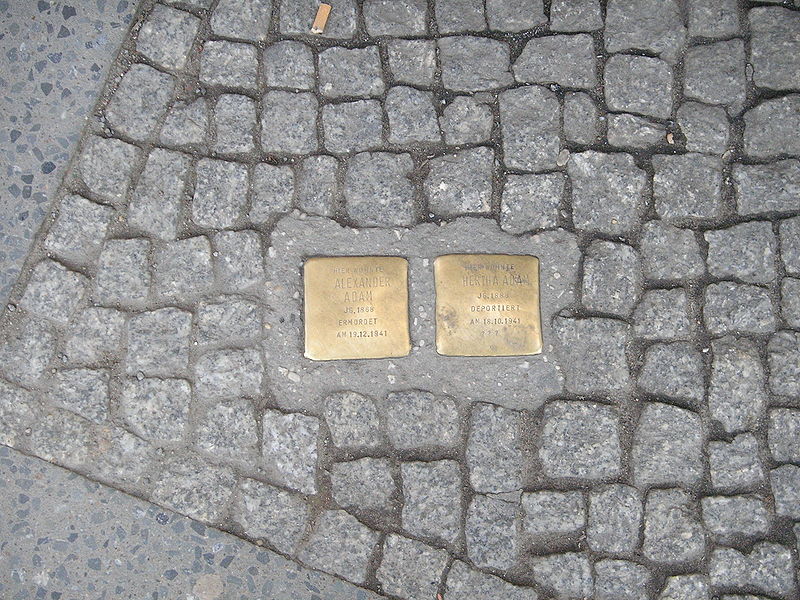Stolpersteine, literally stumbling stones, are an ongoing project which started on the streets of Germany. They are small, square brass plaques, about the size of a cobblestone. Each Stolpersteine commemorates an individual victim of the Nazis. The Nazi party’s persecution extended to many different peoples, cultures, and subcultures. Political dissenters were not tolerated, either. There were more than a few victims of the concentration camps who did not fit into any of the persecuted groups – in many ways, nobody was safe, and so this project commemorates people from many faiths and many walks of life.
Though the vast majority of the fascist regime’s victims were Jewish, the Nazi party’s persecution also extended to many other different peoples, cultures, and subcultures. Political dissenters were not tolerated, either. There were more than a few victims of the concentration camps who did not fit into any of the persecuted groups – in many ways, nobody was safe, and so this project commemorates people from many faiths and many walks of life without distinction.
Who’s behind this project?
German artist Gunter Demnig, who was born just two years after the conclusion of World War II, developed Stolpersteine. Gunter Demnig placed the first stones in the Kreuzberg district of Berlin in 1996. Demnig quotes the Talmud on his website: “a person is only forgotten when his or her name is forgotten.” The project is ongoing.
What are Stolperstein?
Demnig’s Stolperstein are made of brass. They are about the size of a cobblestone, set into the surface of roads and pavements near to places where victims of the persecutions and deportations once lived or worked. Engraved on each memorial are details about an individual victim, a name, a date of birth, a date of death, and a word or two about their fate. Most stones begin with the inscription Hier wohnte… (Here lived…)
The name translates literally as “Stumbling Block”, and the word is sometimes used in German to refer in a more abstract way to a problem or an obstacle.
How big is the project?
There are now more 50,000 Stolperstein across the European continent. In August 2014 @_stolpersteine_ tweeted that 48,000 individual plaques had been laid, and the laying of the 50,000th was announced on the 11th of January 2015. The project spans at least 18 countries and more than a thousand cities.
Not all towns and cities have embraced the project. There are some areas which have resisted the project, for various reasons. In the City of Munich, for example, the city council rejected the installation of the monuments after some respected leaders of the German Jewish community objected. It was felt the having memorials in the ground where they were bound to be stepped on was disrespectful to the individuals and against some principles of Judaism.
What next?
Gunther Demnig’s thought-provoking and impressive project is ongoing and shows no sign of slackening its pace. Demnig continues to work at obtaining permission and placing Stolperstein, promoting the project and actively documenting his work on his twitter account and his website, http://www.stolpersteine.eu/
